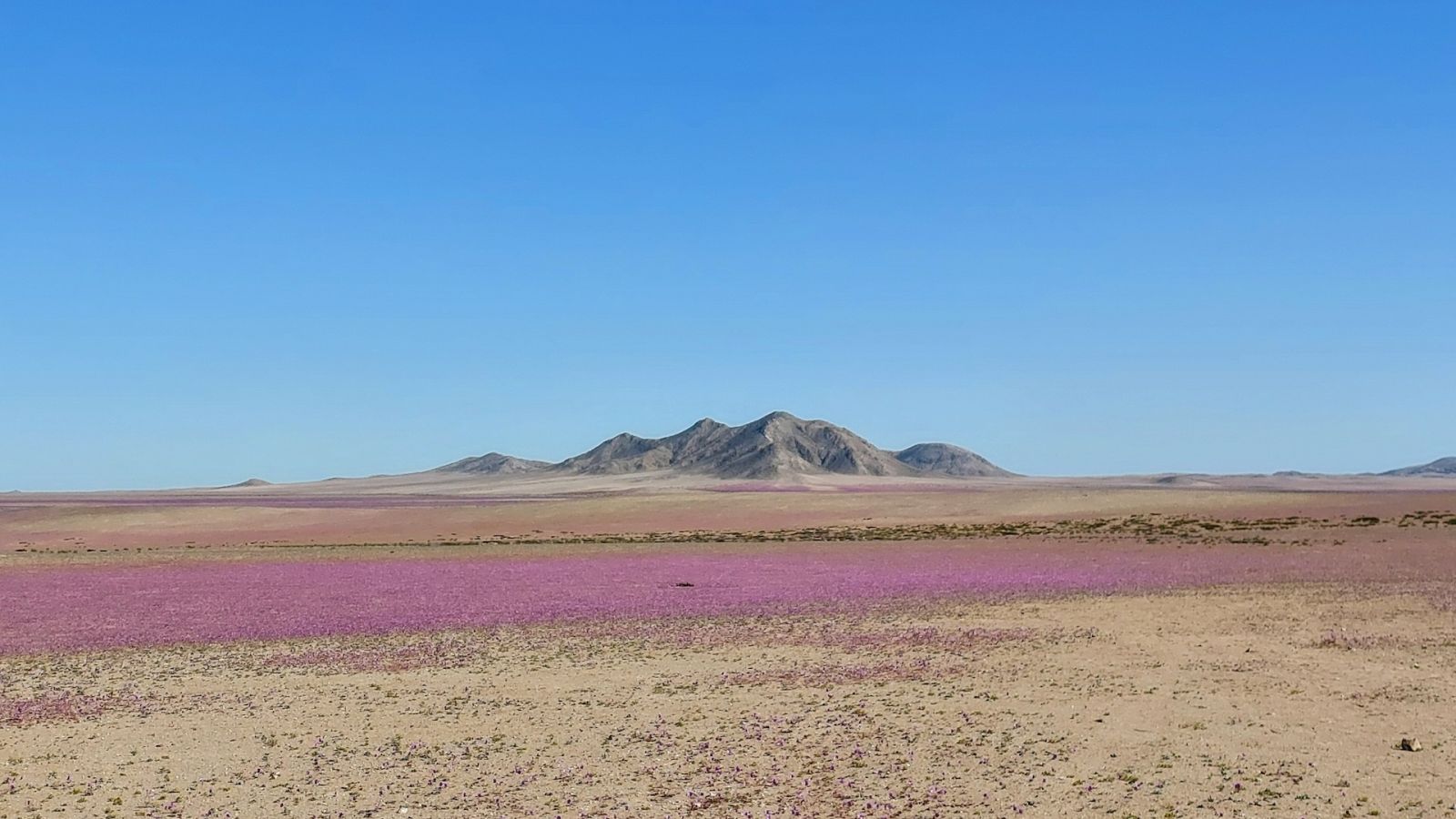Follow us on Google News (click on ☆)

Rare winter bloom in the Atacama, with fuchsia "pata de guanaco" (Cistanthe grandiflora) dotting the landscape.
Credit: César Esteban Pizarro Gacitúa
The precipitation of about 0.43 inches (11 mm) and the morning "camanchaca" fog have awakened dormant vegetation. The first species to appear are Cistanthe grandiflora and Nolana baccata.
The current bloom covers between 110 and 150 square miles (300 and 400 km²), according to César Pizarro from Conaf. A spring bloom can extend over 5,800 square miles (15,000 km²) with more than 200 species. It typically occurs after rainfall from June to August linked to the El Niño phenomenon.
In 2015, rains in March had already triggered a similar winter bloom, followed by a floral explosion in the spring. This year, the forecasts remain uncertain; the La Niña phenomenon could prevent a spring bloom.
A major challenge is the absence of pollinators, delayed by low temperatures, explains María Fernanda Pérez. Only a few moths, reptiles, birds, and mammals have been observed. The plants have a mechanism for autonomous pollination, but it is delayed.

The fuchsia flowers of Cistanthe grandiflora appear in this rare bloom.
Credit: César Esteban Pizarro Gacitúa
Climate change could make these abnormal events more frequent, threatening the floral diversity of the Atacama Desert by leaving only bulbous plants or favoring invasive species.